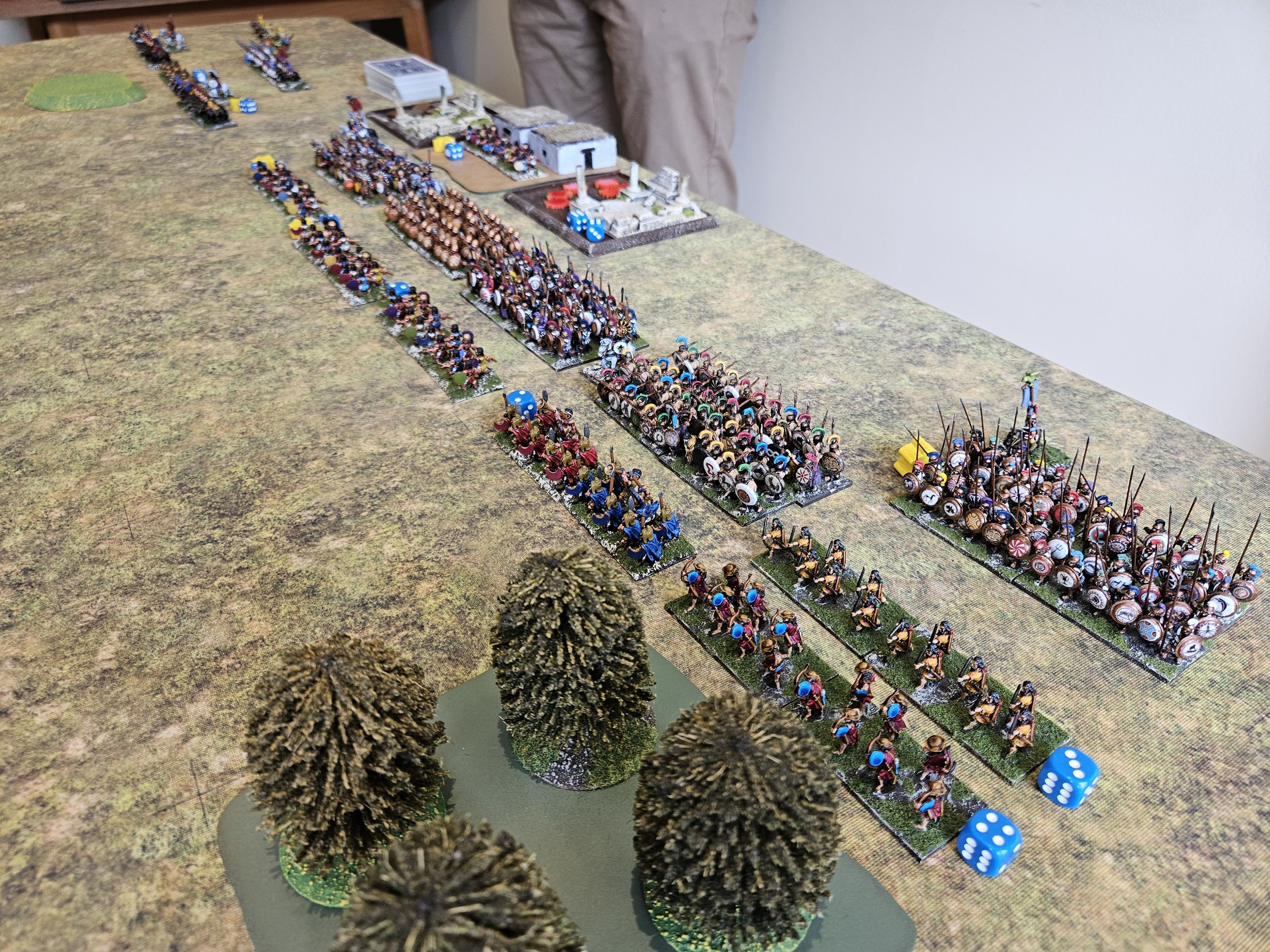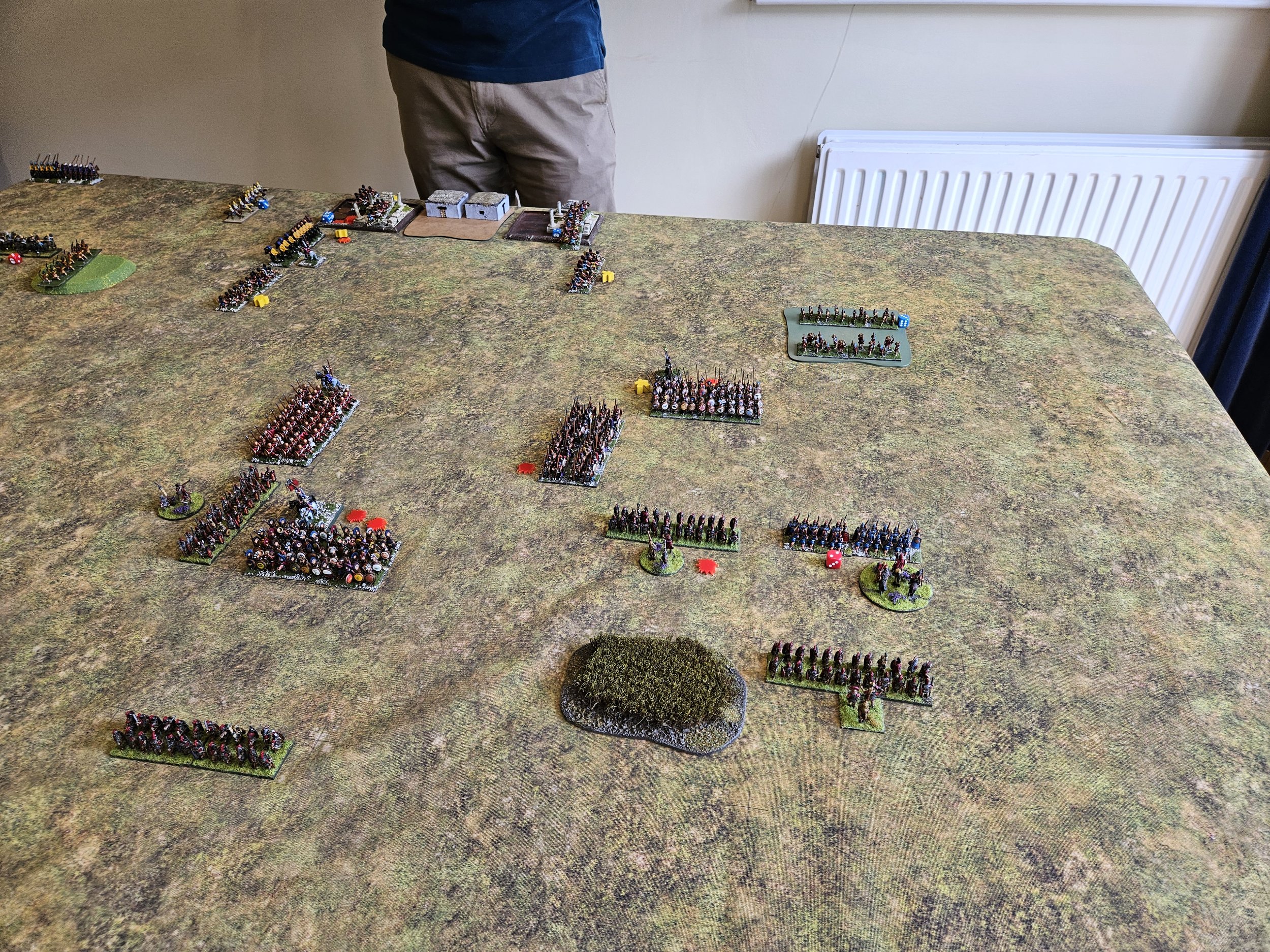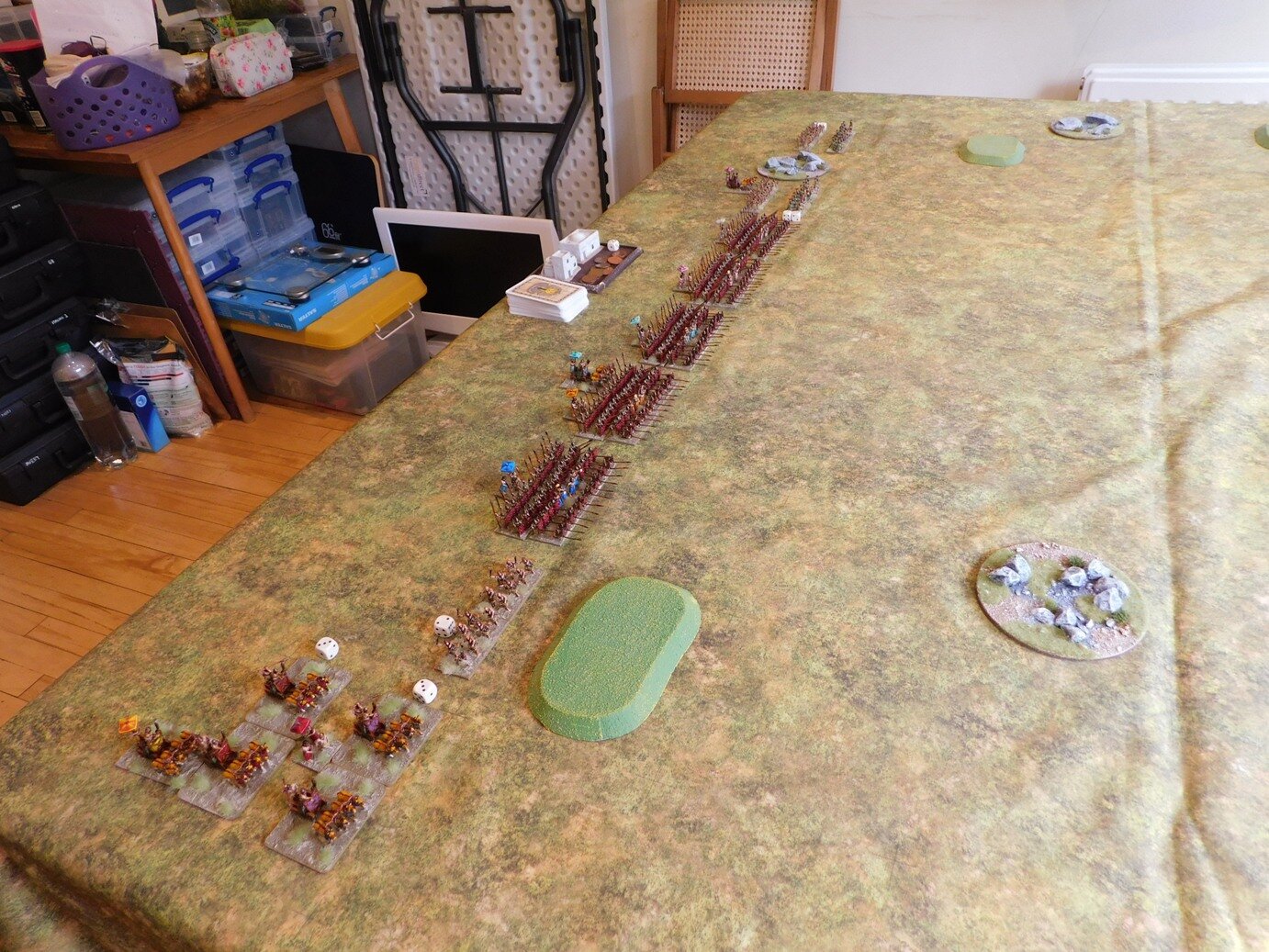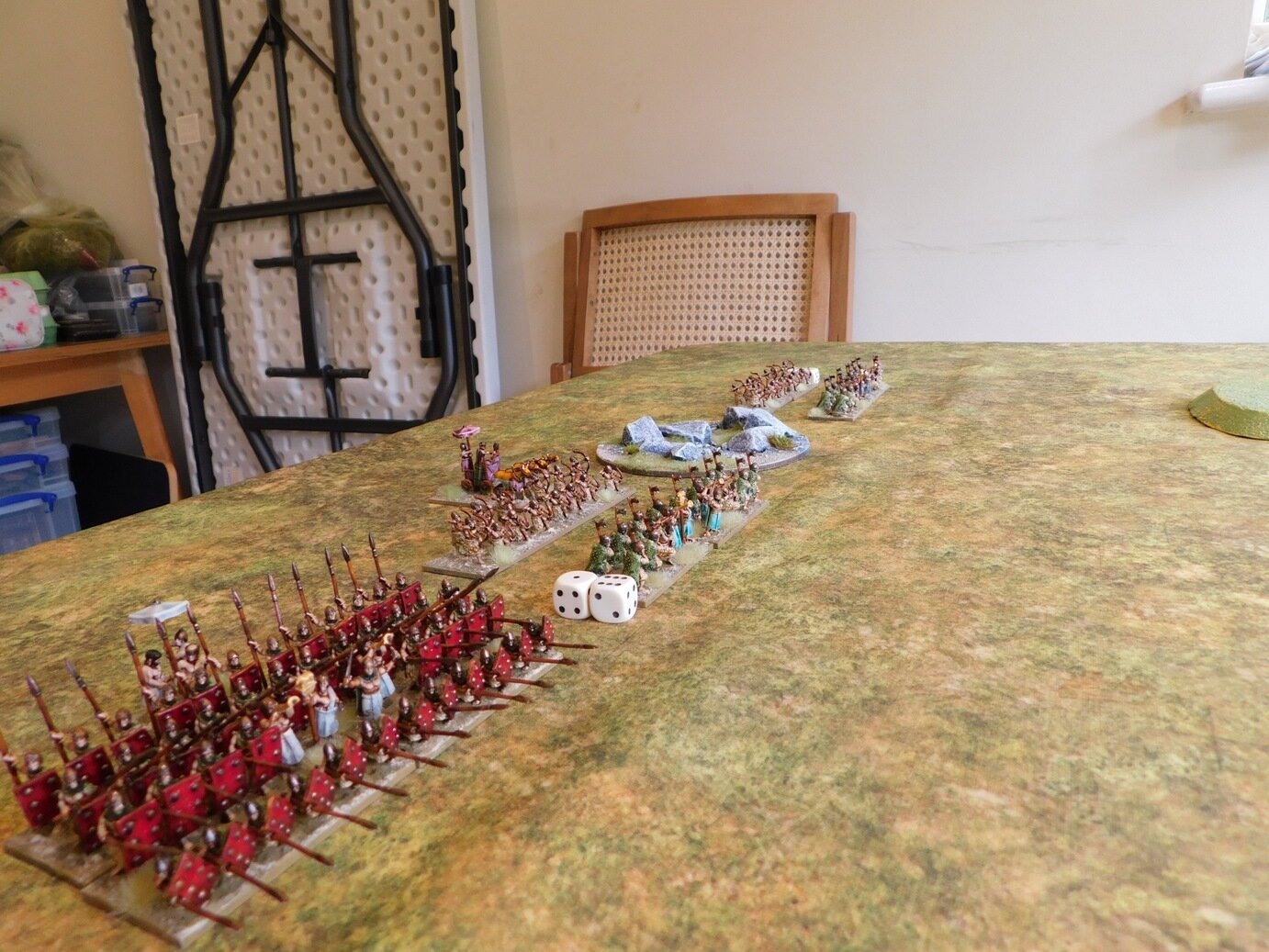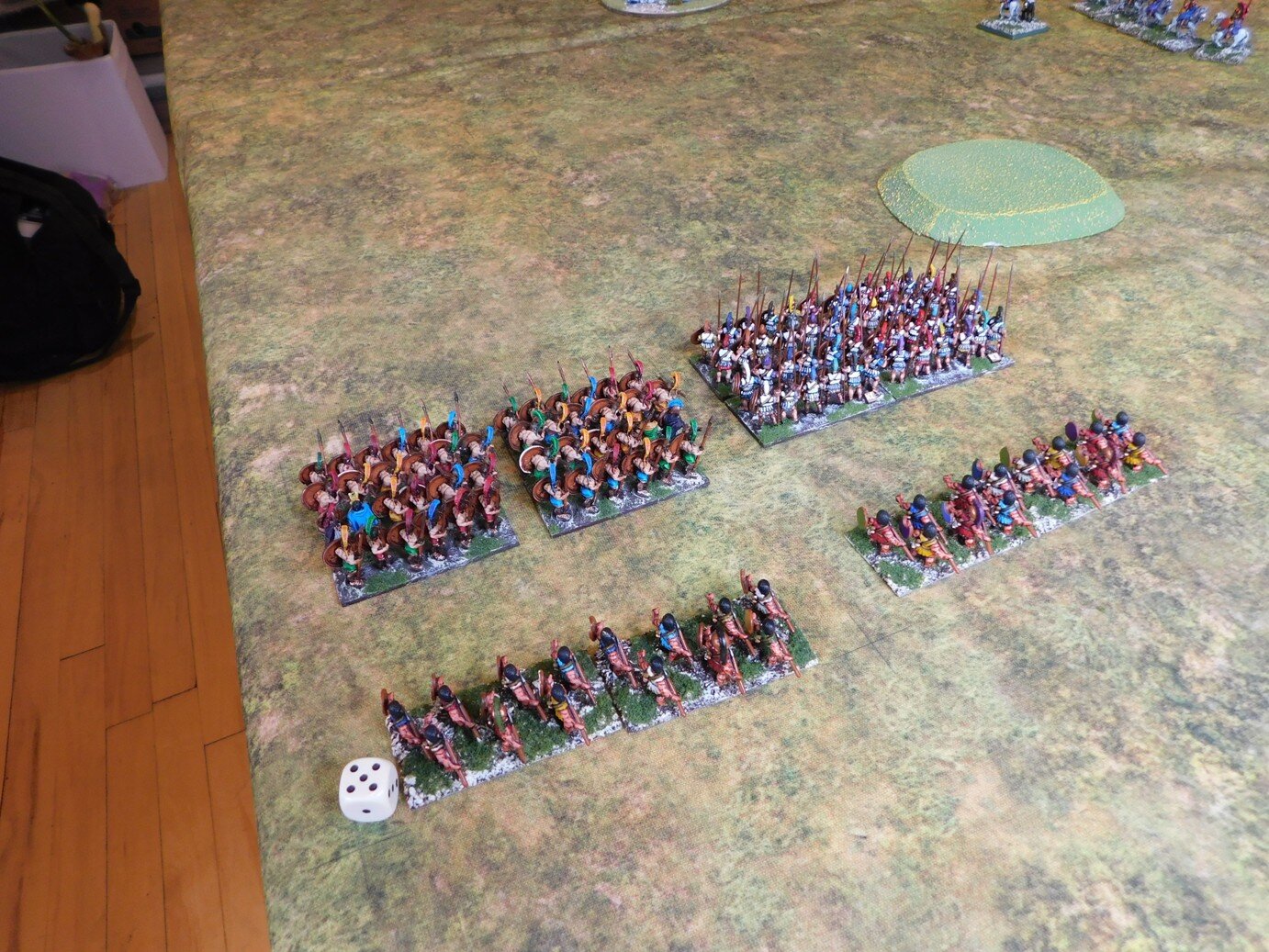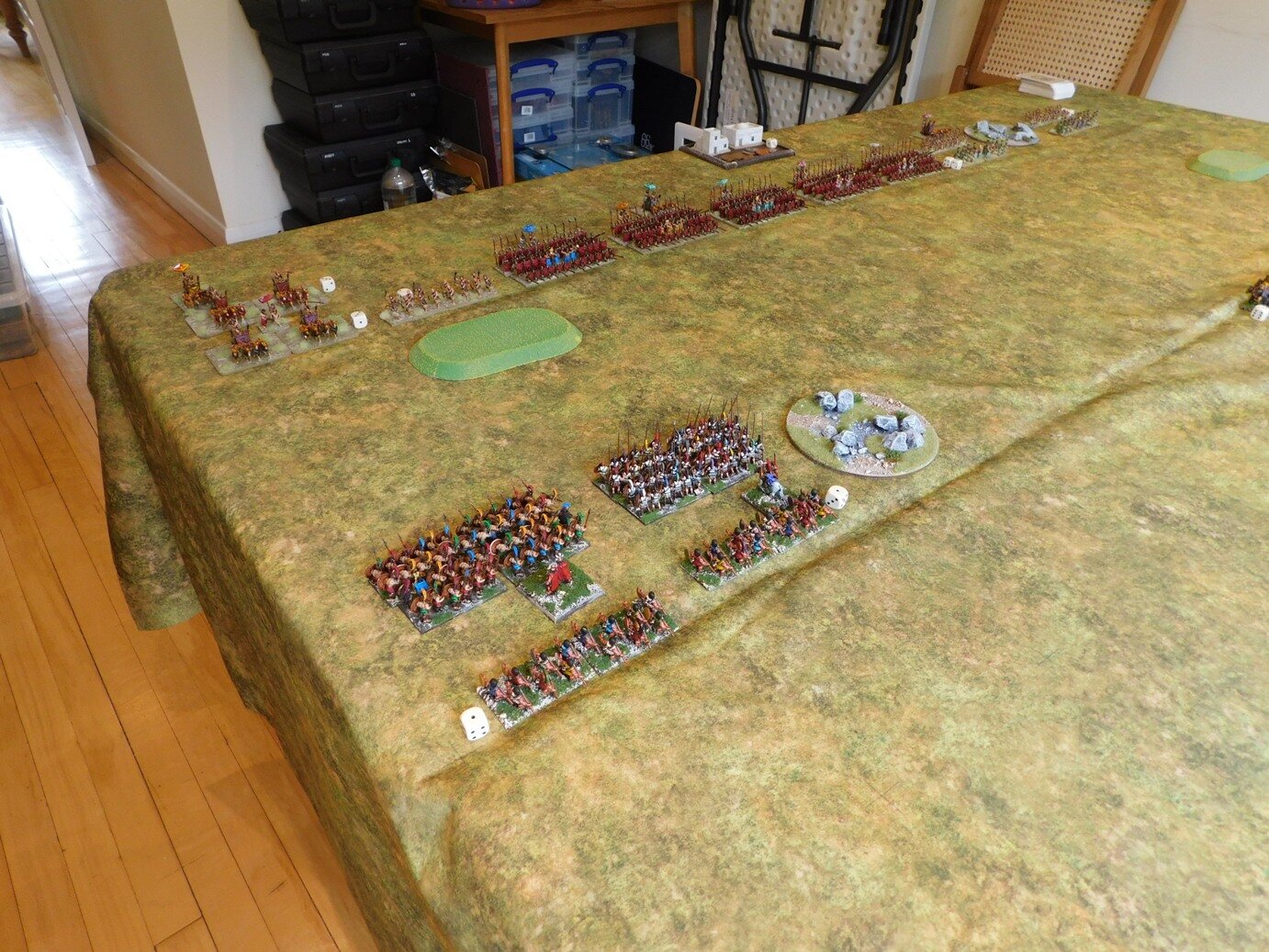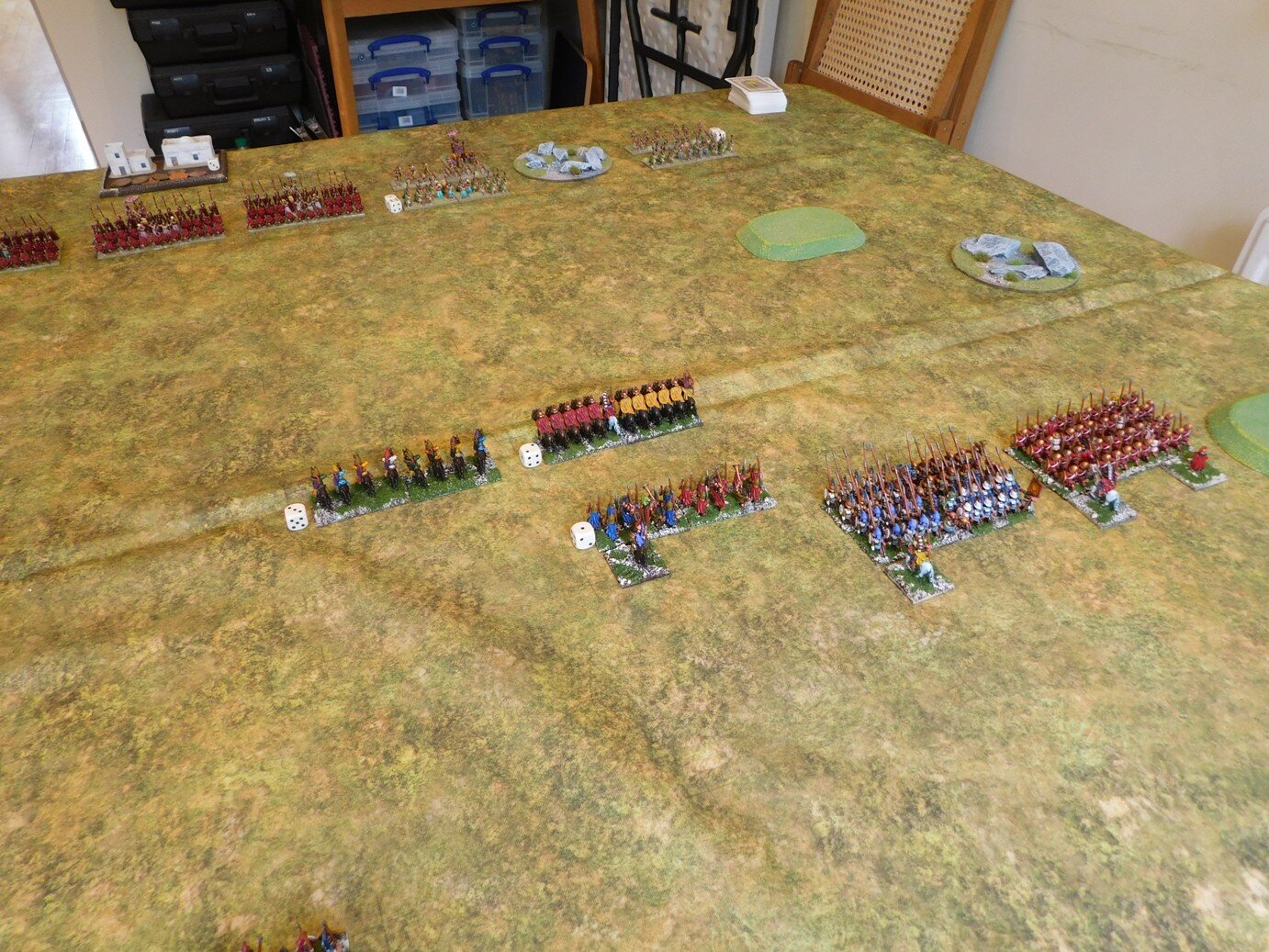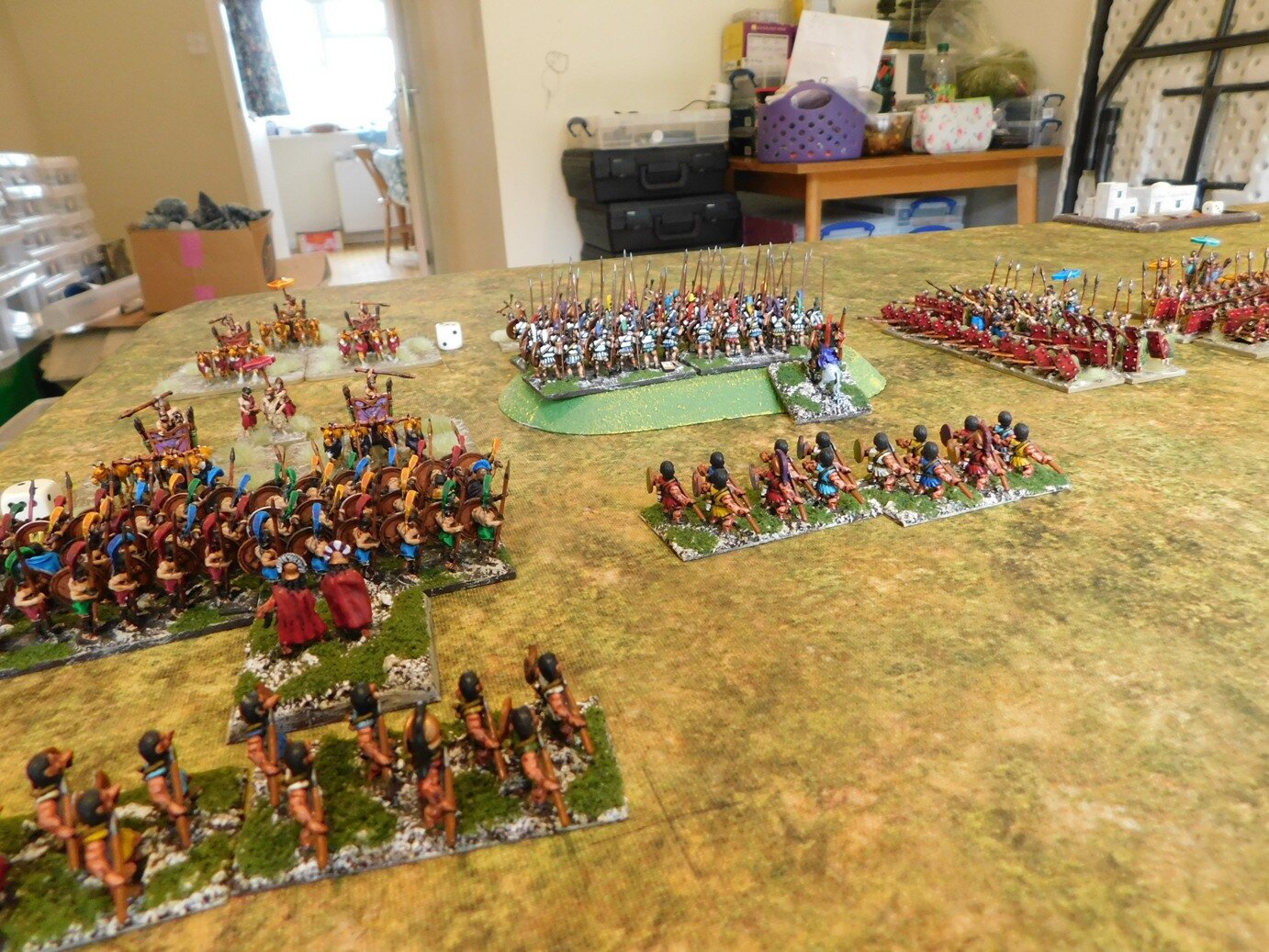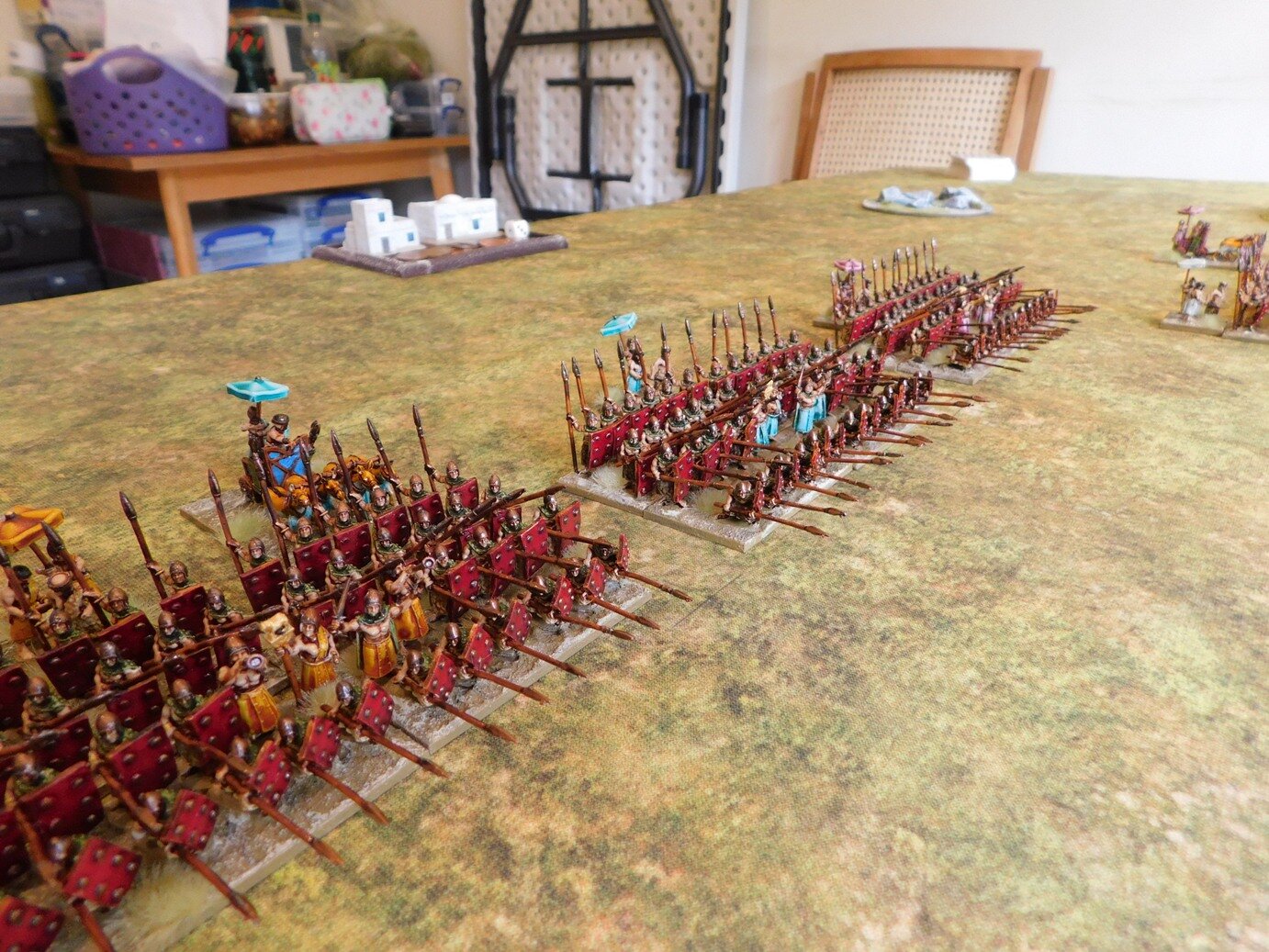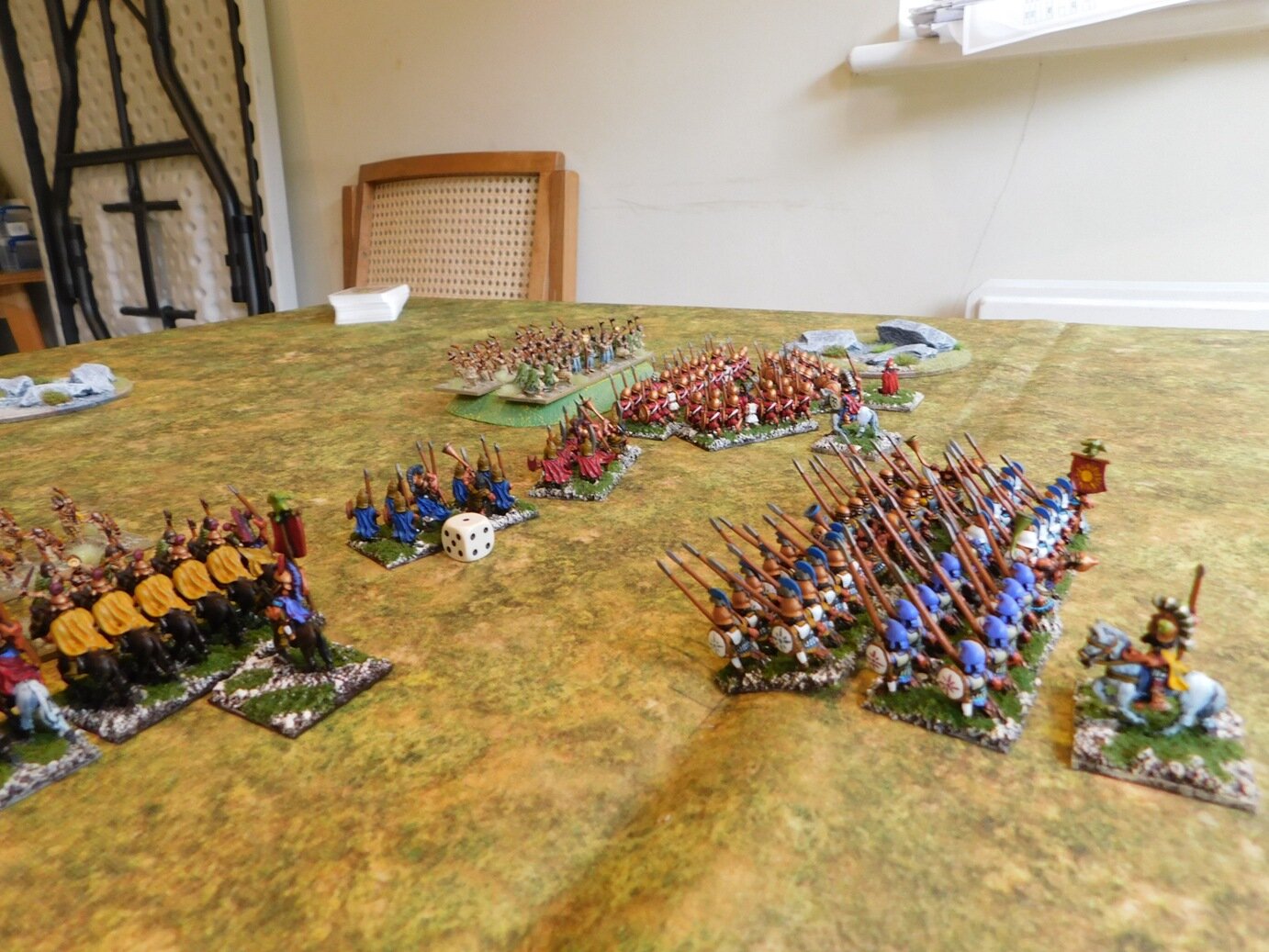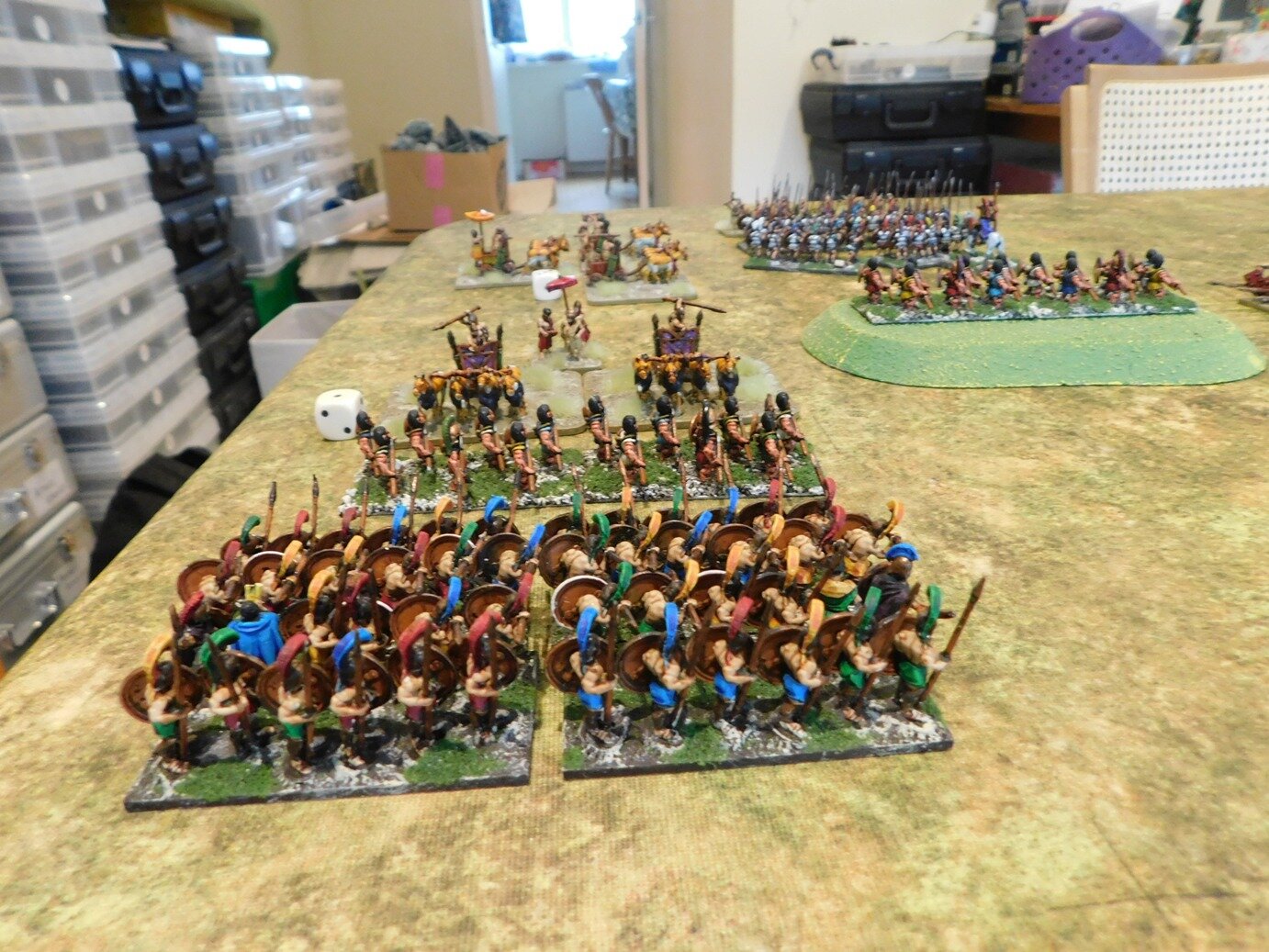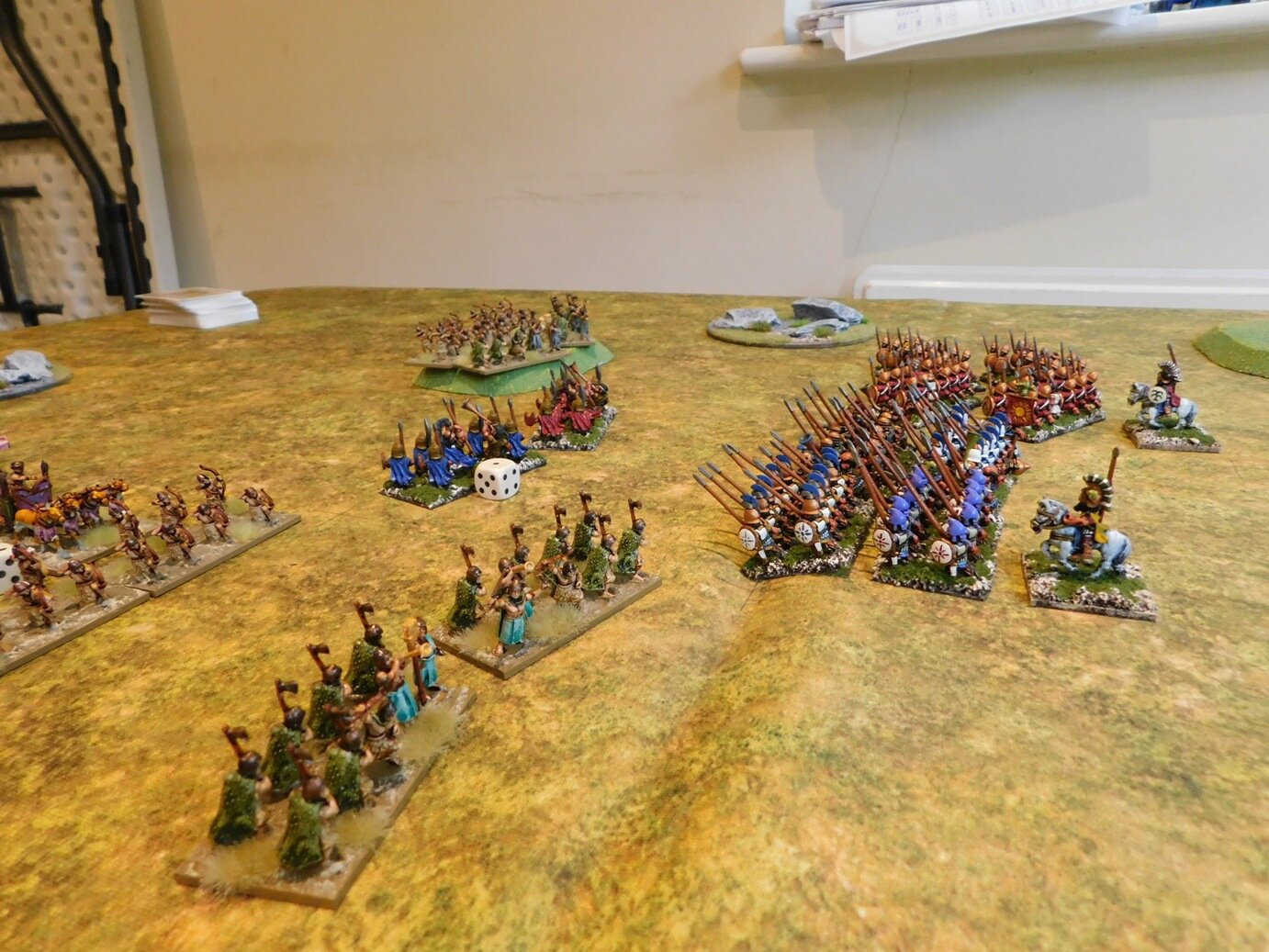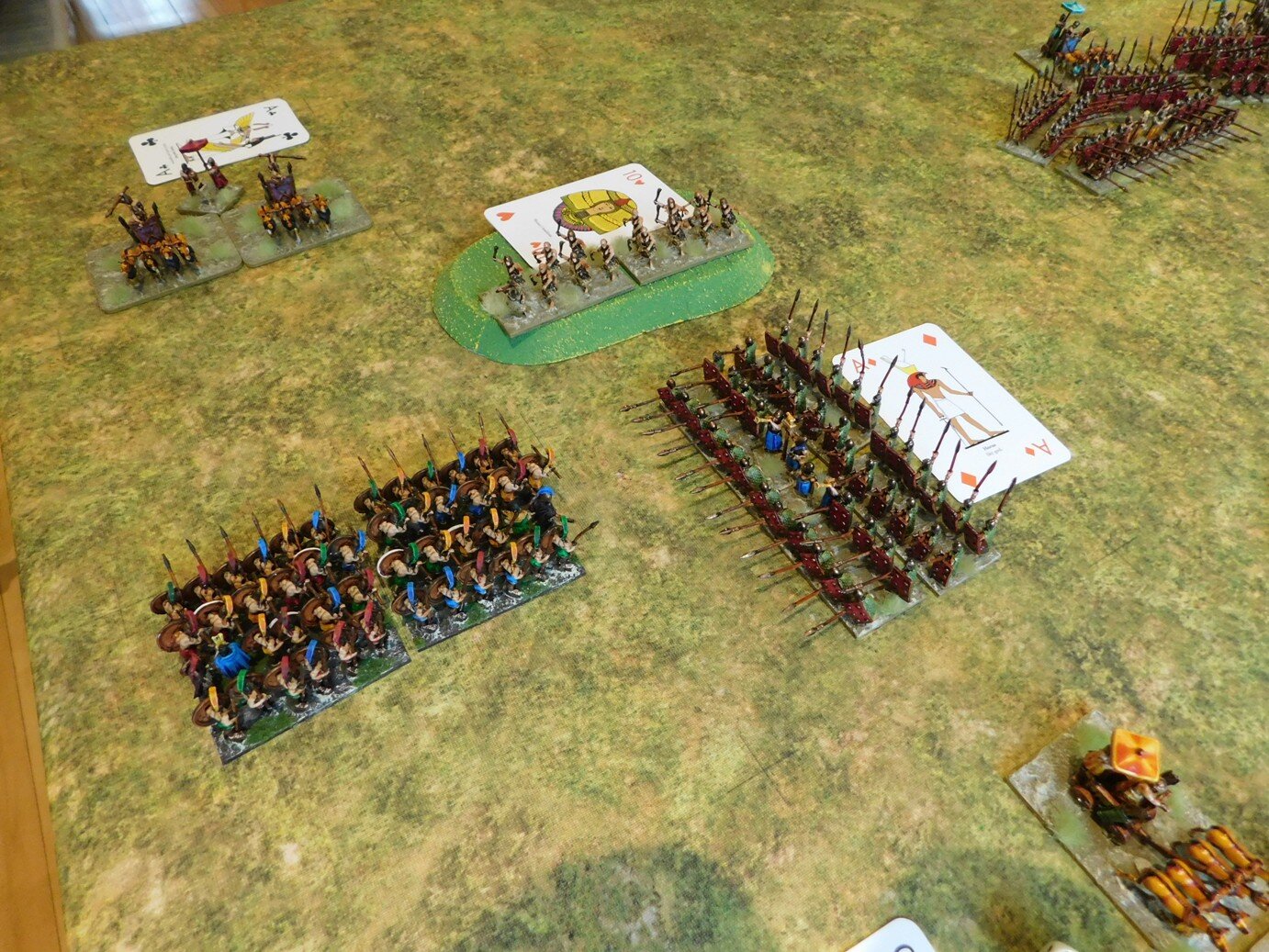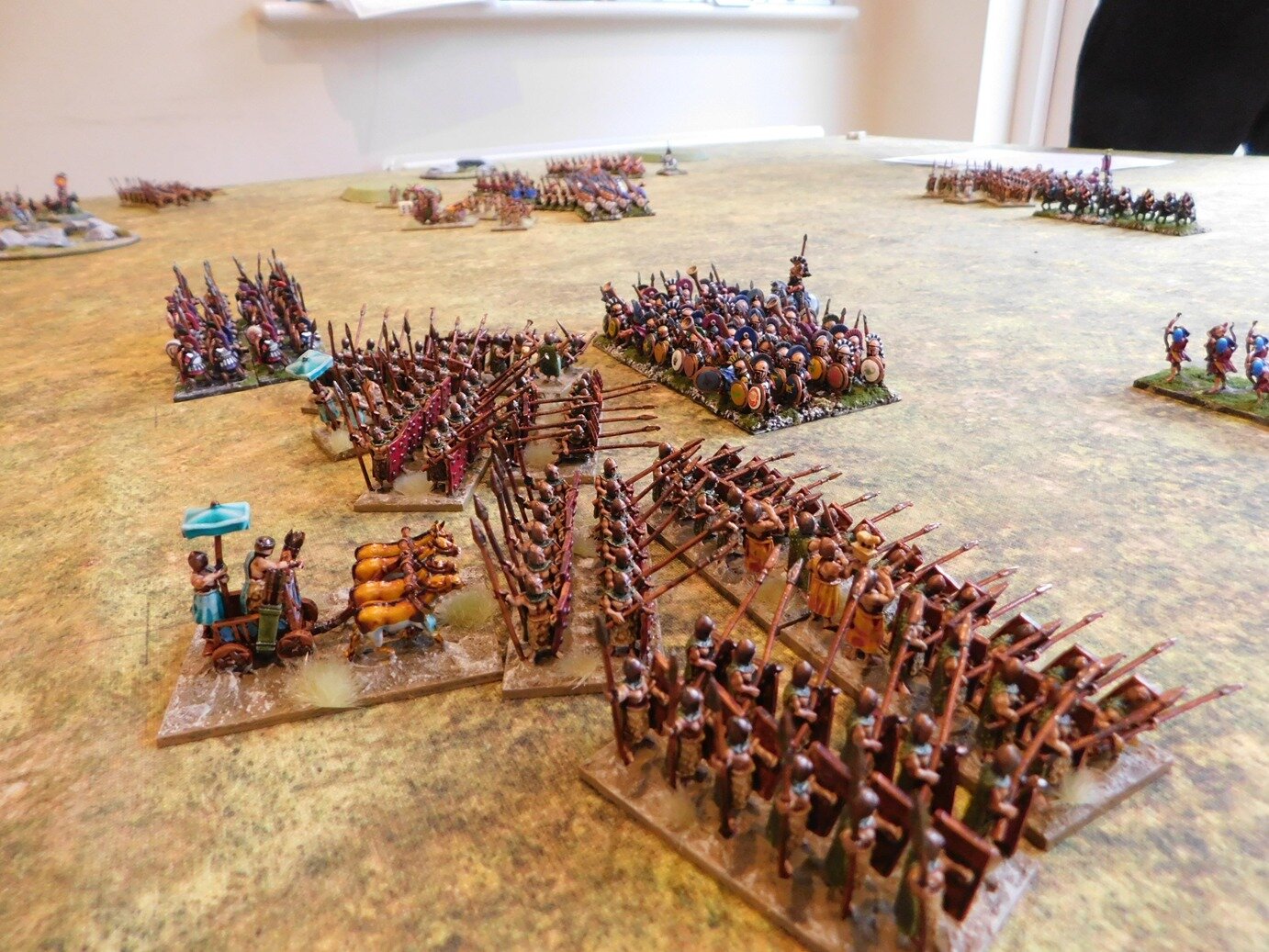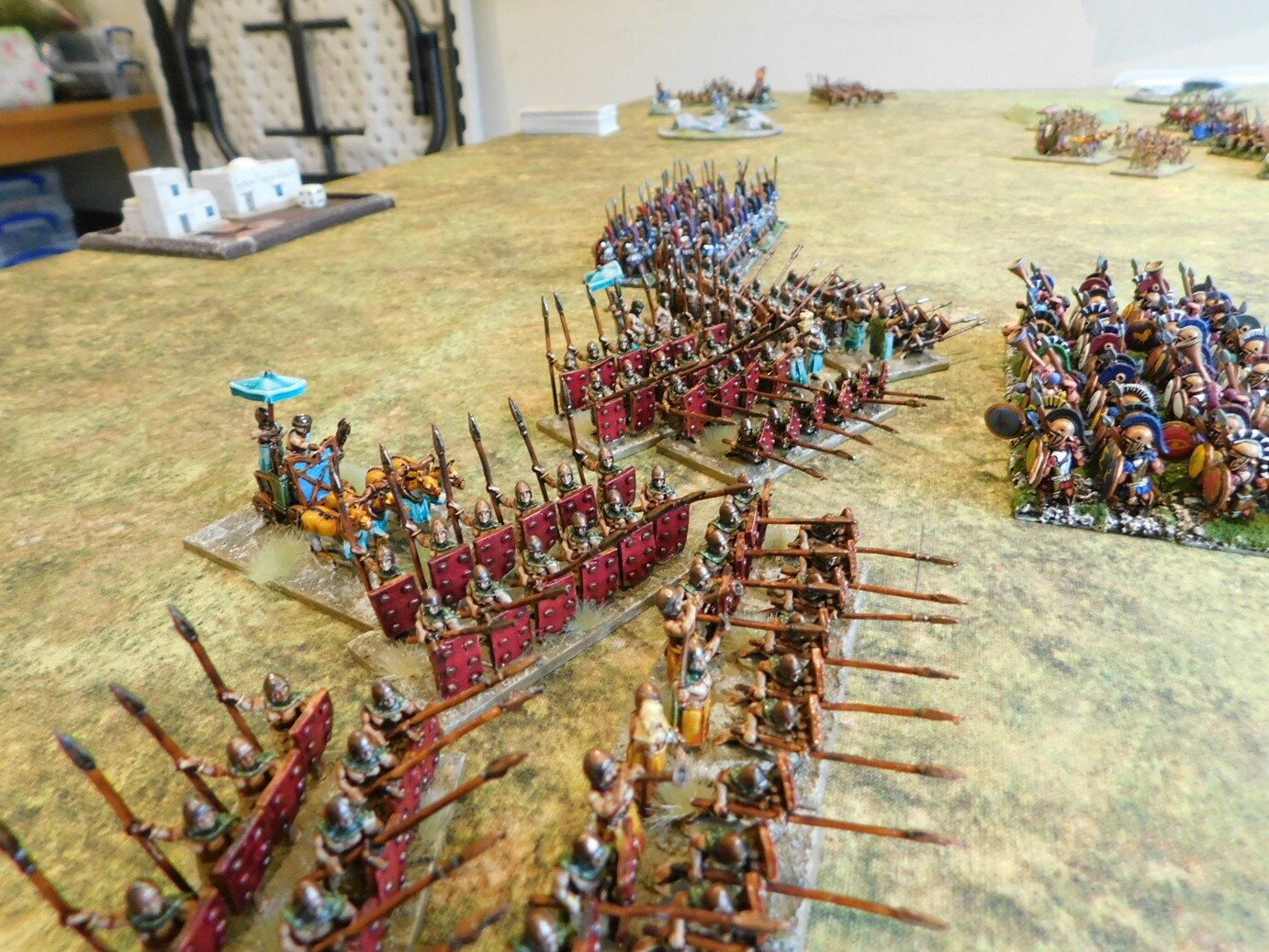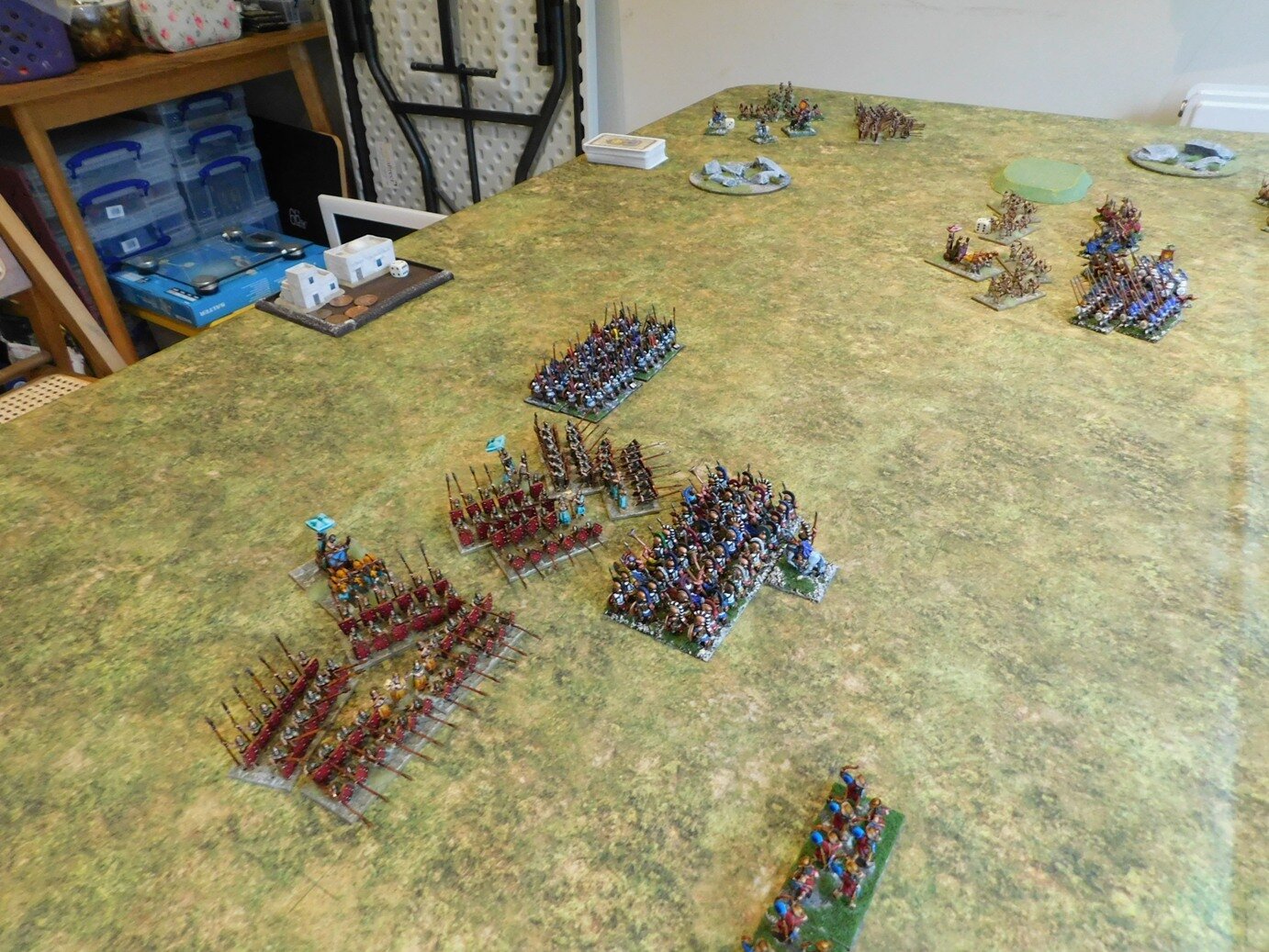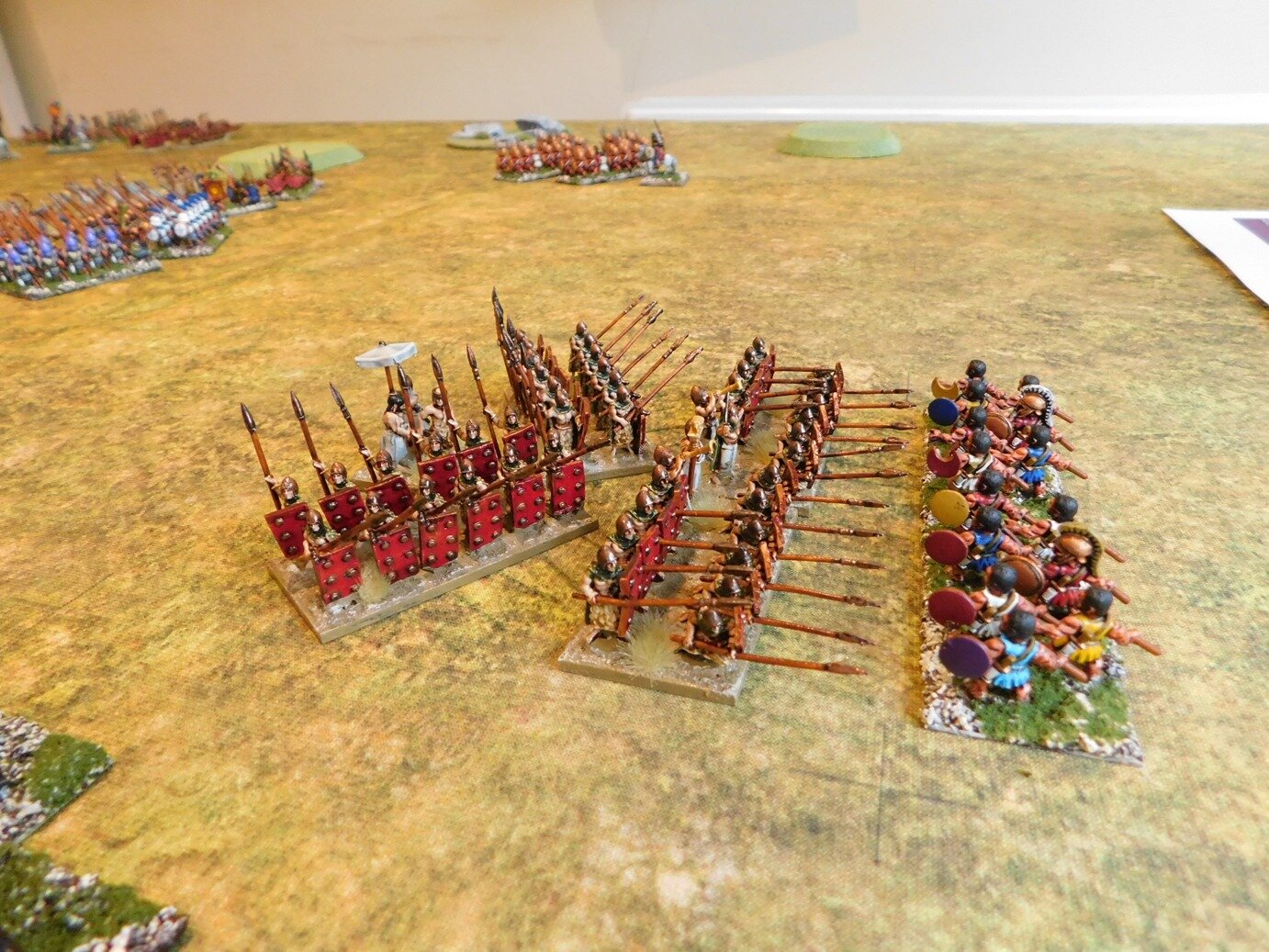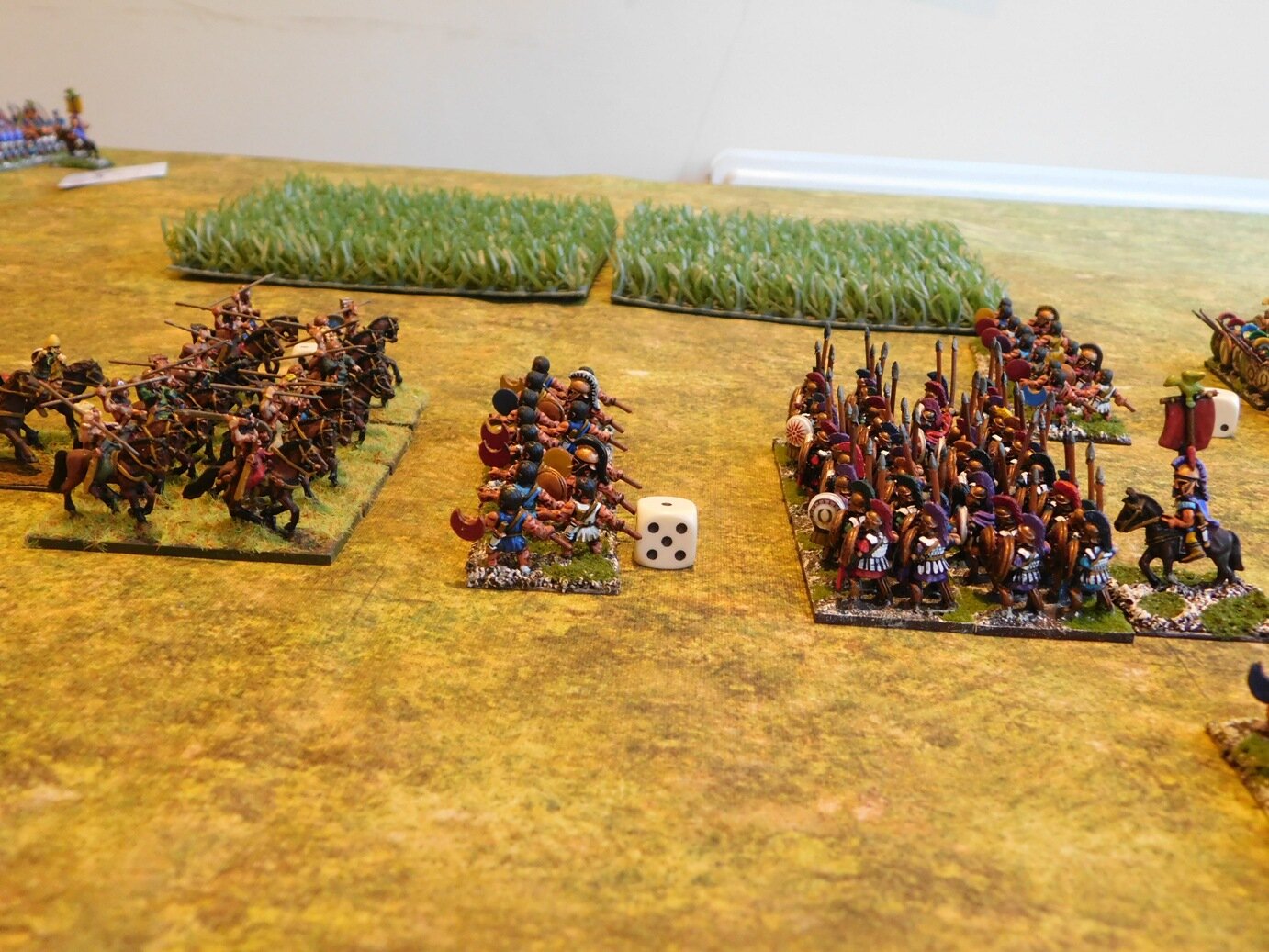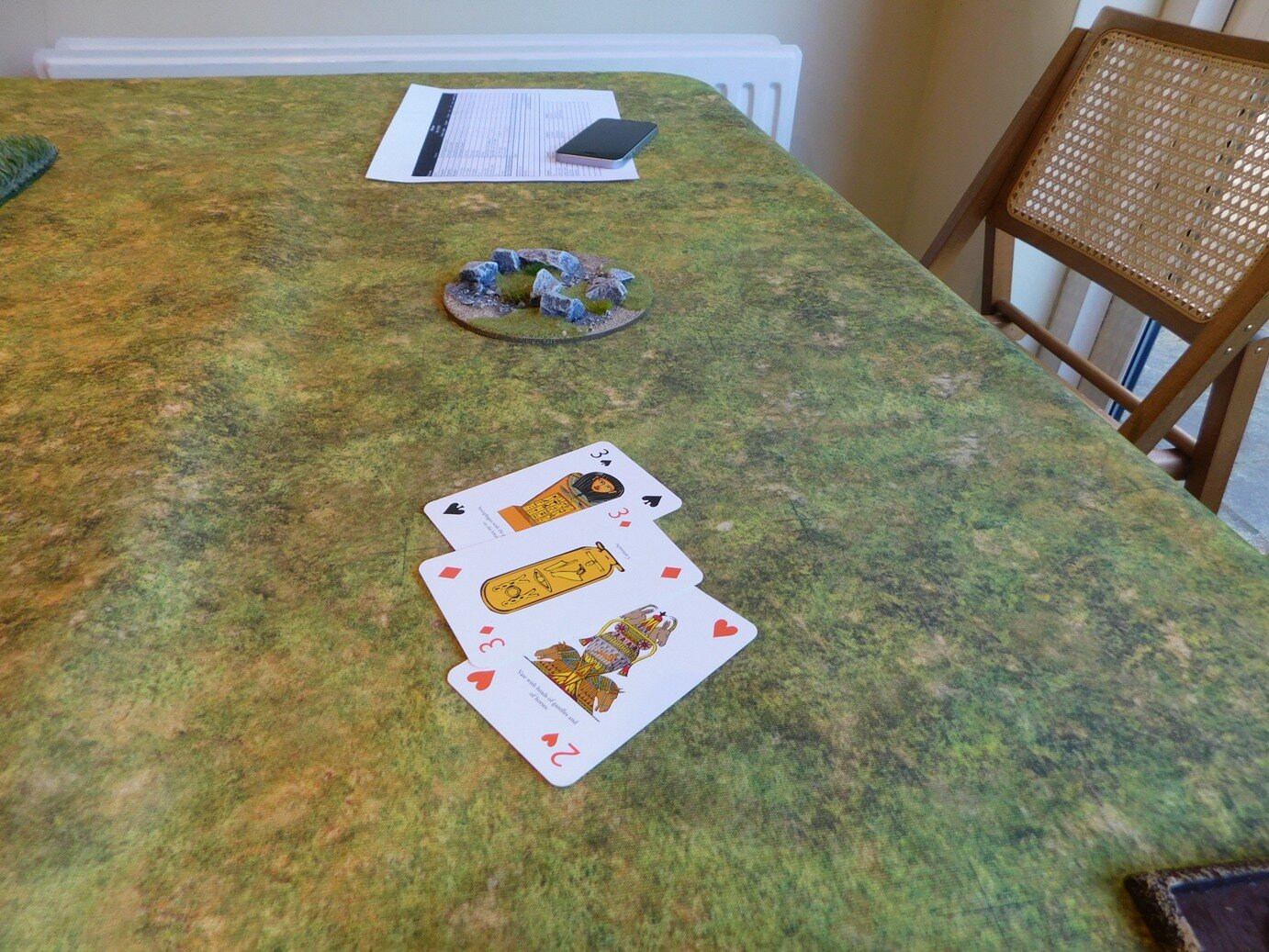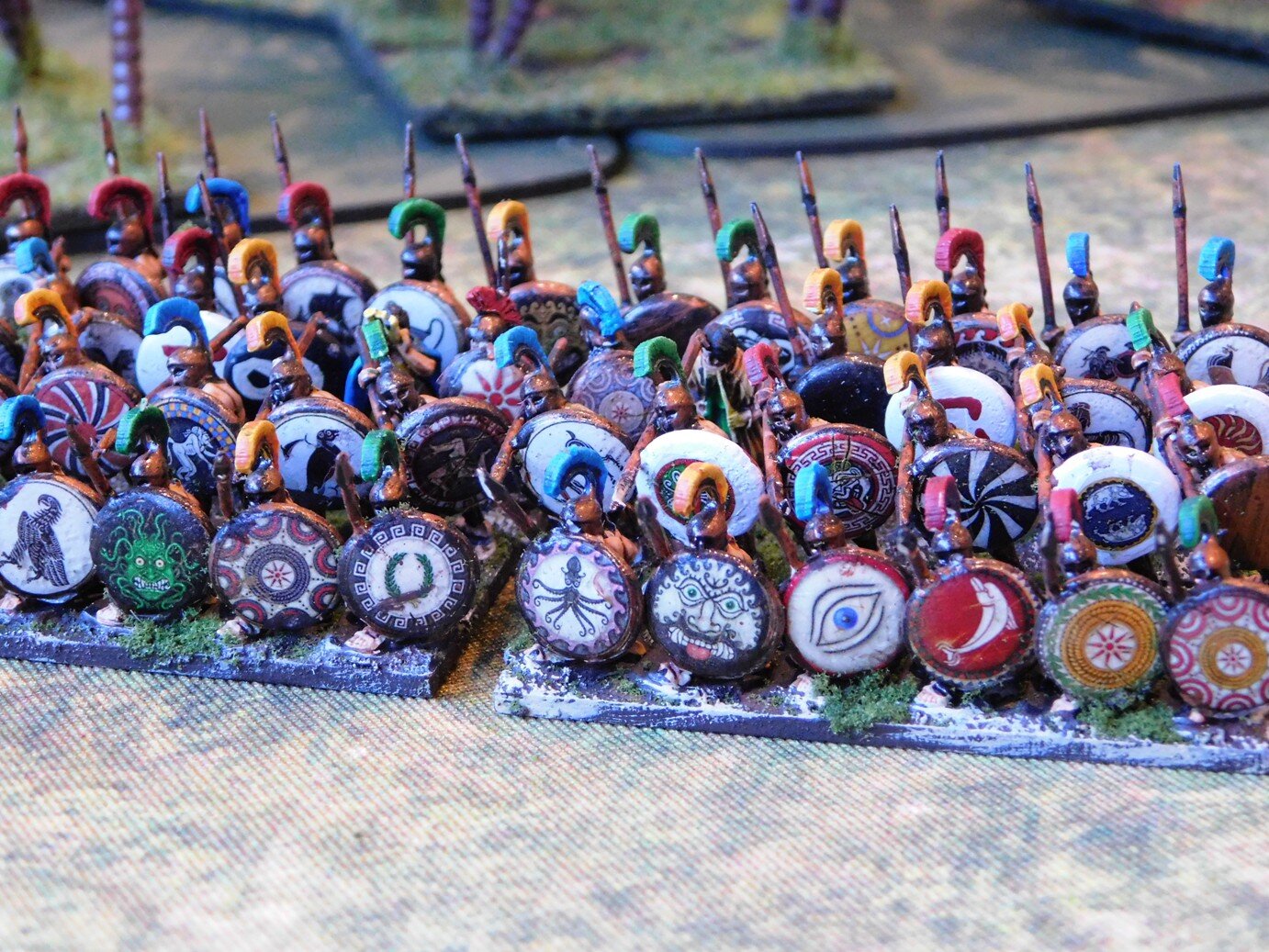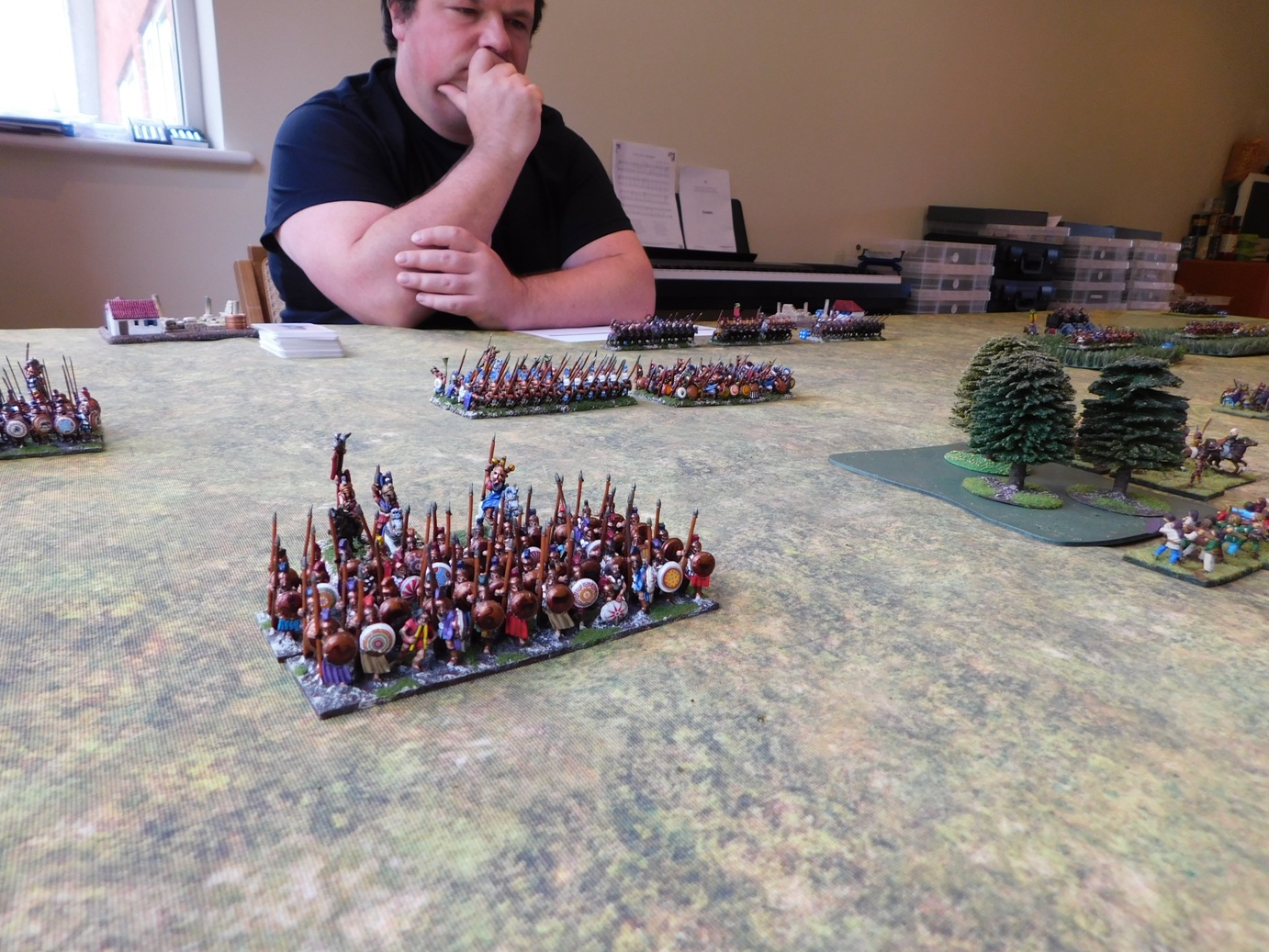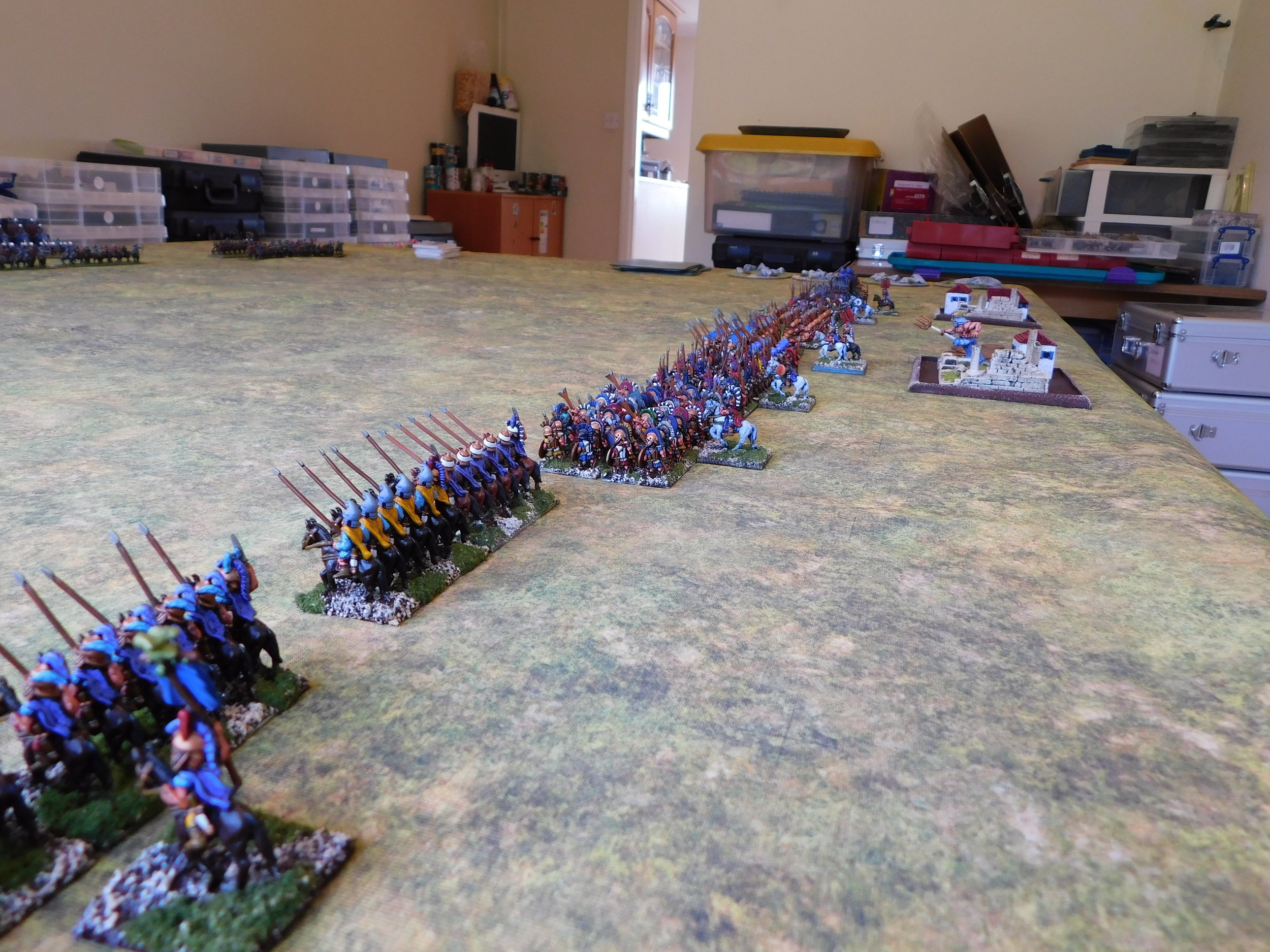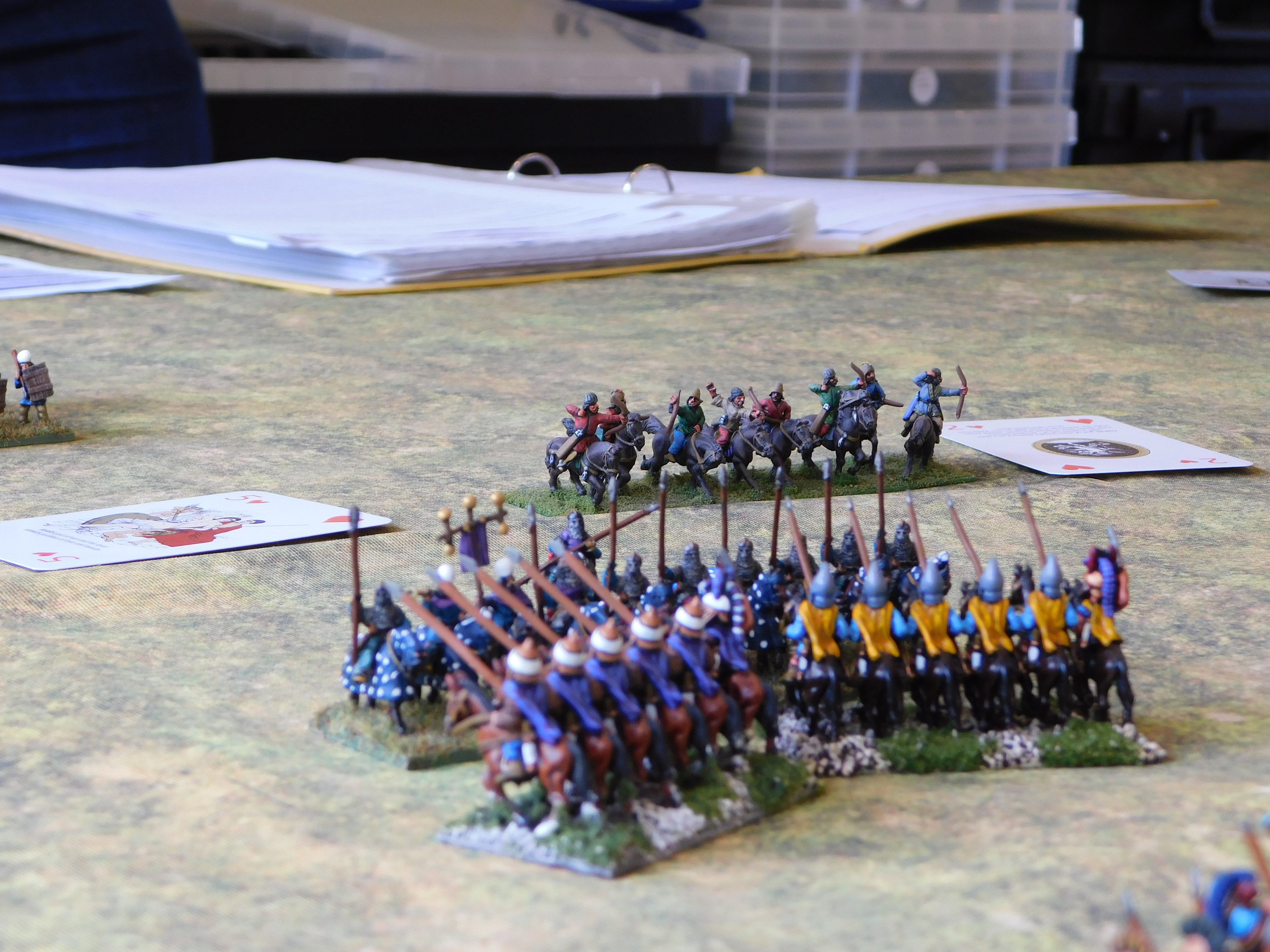TTS AAR: Early Imperial Romans versus Hoplite Greeks
/Clearing out my computer’s memory, I came across these pictures from a game played earlier this year: a practice session for the autumn tournament season that pitched my Early Imperial Roman’s against friend Other Rob’s Hoplite Greeks.
As it was a few weeks ago, I don’t have a blow-by-blow account of the game for you, but I do remember that the large Greek phalanxes caused a few problems for the Romans, and it was only their ability to manoeuvre and to rally that got them the win.
Here’s a gallery of the action: hopefully the pictures will tell the story!
It’s all coming back to me now!
My plan was to have the Roman cavalry overwhelm the lesser quality Greek horse on my left then curl back into the centre to take the Greeks in the flank.
That didn’t happen: as per usual the Roman horse proved incapable of beating the moth-eaten rabble in front of them, so that flank remained effectively neutralised throughout the battle.
That meant that the Legions had to do the work and won the day by ganging up on the individual phalanxes and taking them from two sides at once. Oh, and the Equites Sagittarrii light horse took the enemy camp as well, which helped!


